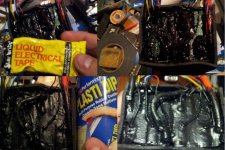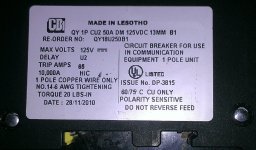bigmoose
1 MW
Amberwolf was talking to me this morning about having a central thread where good electrical system design could be discussed. Items that were outside the scope of our 2013 Li Battery Catastrophic Events - Summary Thread that is located here: http://endless-sphere.com/forums/viewtopic.php?f=14&t=47012
I fully supported Amberwolf's idea as I also thought the gent who just had a "lessons learned" while using an automotive fuse in the system that "got crispy" would be beneficial to us all. To me his experience is the kind of thing that can happen to any of us. However by pooling our field experience the shortcomings of products and design approaches can be shared when used in our application environment. His knowledge would sure benefit more than a few. Thread here: http://endless-sphere.com/forums/viewtopic.php?f=3&t=47192 Also Amberwolf's recent AC connector failure, documented here: http://www.endless-sphere.com/forums/viewtopic.php?p=693832#p693832
Right now these nuggets are scattered throughout the forum. Perhaps this thread will help, and we can fine tune the format as we go... For now lets just post the issue here and discuss it here. Pictures of the problem always help.
I fully supported Amberwolf's idea as I also thought the gent who just had a "lessons learned" while using an automotive fuse in the system that "got crispy" would be beneficial to us all. To me his experience is the kind of thing that can happen to any of us. However by pooling our field experience the shortcomings of products and design approaches can be shared when used in our application environment. His knowledge would sure benefit more than a few. Thread here: http://endless-sphere.com/forums/viewtopic.php?f=3&t=47192 Also Amberwolf's recent AC connector failure, documented here: http://www.endless-sphere.com/forums/viewtopic.php?p=693832#p693832
Right now these nuggets are scattered throughout the forum. Perhaps this thread will help, and we can fine tune the format as we go... For now lets just post the issue here and discuss it here. Pictures of the problem always help.




